Image source: "Photo Of People holding Their Phones", by fauxels, licensed under Free to Use
In today's highly competitive business landscape, it's more important than ever to ensure your customers keep coming back for more. But how do you foster that sense of loyalty and turn one-time shoppers into devoted fans?
Look no further, as we have the perfect solution for you. In this blog post, we will explore the eight most common types of loyalty programs and lay out their most notable pros and cons.
By implementing a well-designed and personalized loyalty program, you can not only strengthen your customer relationships but also set your business apart from the competition.
From points-based systems to tiered rewards, the possibilities are endless. So, whether you're an SMB or a large-size company, get ready to dive into the world of customer loyalty and unlock the secrets to long-lasting success!
#1 Points-Based Programs
One of the most commonly used types of loyalty programs is the points-based program. Points-based customer loyalty programs reward customers with points for their purchases or engagements. As points accumulate, customers can redeem them for discounts, free products, or exclusive benefits.
Best practices:
- Design a straightforward points system that is easy for customers to understand and track to avoid confusion or frustration.
- Provide a diverse range of attractive rewards that cater to different customer preferences.
- Encourage customers to earn points not only through purchases but also by engaging with your brand through social media, referrals, and reviews.
- Keep customers informed about their points balance, reward options, and any promotional events to maintain interest and engagement.
- Use customer data to tailor rewards and promotions to make the program more relevant and appealing to individual customers.
- Integrate the loyalty program with your existing systems to ensure a smooth and convenient user experience across all channels.
Best for:
A points-based customer loyalty program should be used if your product or service involves frequent, repeat purchases so that you can allow customers to accumulate points regularly. This type of program is also ideal if you seek to build long-term relationships with customers and foster a sense of brand loyalty.
Pros:
- Boost customer retention and encourage repeat purchases.
- Foster a stronger connection and deeper engagement with customers.
- Gather insights on customer preferences and behaviors.
- Differentiate your business from competitors and create a stronger brand image.
- Motivate customers to spend more and exhibit higher loyalty.
Cons:
- Implementing and managing a points-based program can be complex and resource-intensive.
- Rewarding customers for purchases they would have made anyway can lower profit margins without increasing overall revenue.
- Setting up a comprehensive loyalty program may require a significant upfront investment in technology and resources.
- Over-reliance on a points-based program may lead to customers becoming more loyal to the rewards than the brand itself.
Example: SoFi
SoFi, a personal finance platform, incentivizes its customers to engage with the platform frequently through its rewards program, which operates on a points-based system. By enrolling in SoFi Member Rewards, logging into the app, referring friends, and spending on their SoFi credit card, users can accumulate points that can be redeemed for cash equivalents or other rewards.
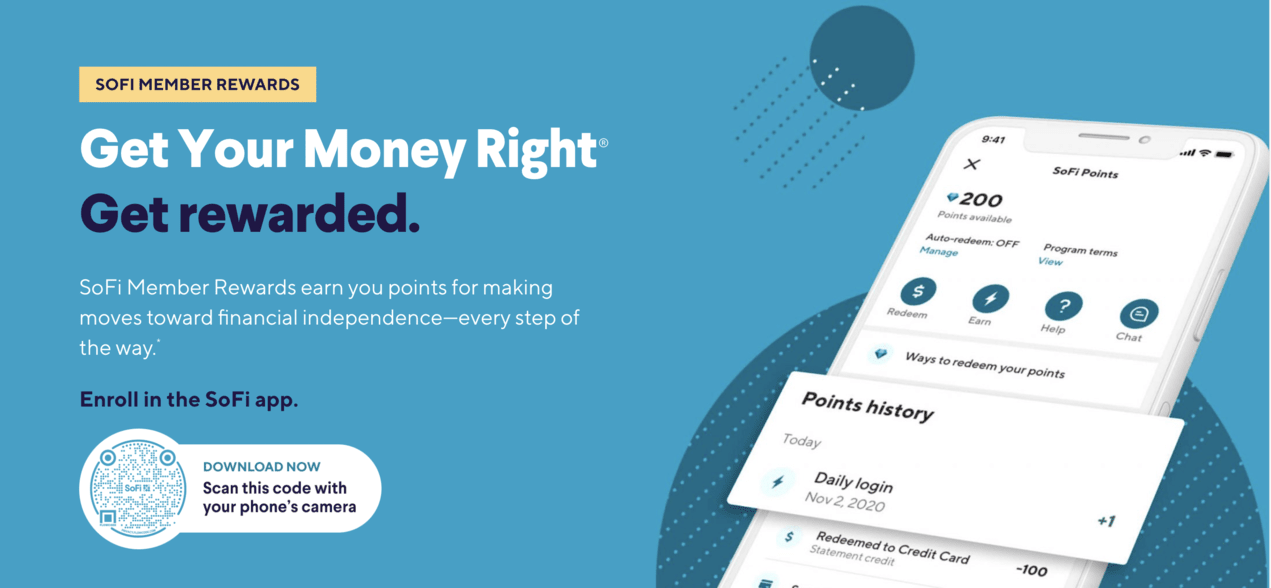
Image source: SoFi
#2 Tiered Programs
Tiered customer loyalty programs categorize customers into different levels or tiers based on their spending or engagement. Each tier offers progressively better rewards and perks, incentivizing customers to spend more or engage further to reach higher tiers and enjoy enhanced benefits.
Best practices:
- Ensure tiers are well-defined with achievable milestones so customers understand the requirements and benefits.
- Provide exclusive perks at each tier to motivate customers to strive for higher levels.
- Tailor rewards to individual preferences, making each tier feel unique and valuable.
- Regularly update customers on their tier status and upcoming rewards to maintain interest.
Best for:
A business should use a tiered loyalty program when aiming to encourage higher spending, enhance customer segmentation, and cater to different customer preferences. These types of customer loyalty programs work well for businesses with diverse product offerings and customer bases or when seeking to reward long-term, high-value customers.
Pros:
- Encourages customers to spend more to reach higher tiers and access better rewards.
- Facilitates differentiated marketing strategies for distinct customer groups.
- Recognizes high-value customers, fostering a deeper sense of loyalty.
Cons:
- Requires careful planning and management to create an effective and motivating structure.
- Lower-tier customers may feel undervalued, leading to reduced engagement.
- Ineffective for businesses with infrequent or one-time purchases, as customers may struggle to progress through tiers.
Example: RobinHood
To encourage users to invest more into the platform, Robinhood, the widely-used stock trading app, has introduced a rewards program for customers who make deposits into their accounts. The size of the deposit determines the reward, ranging from $10 to $250. By offering tangible rewards, Robinhood can incentivize users to increase their investments while simultaneously providing them with a valuable benefit.
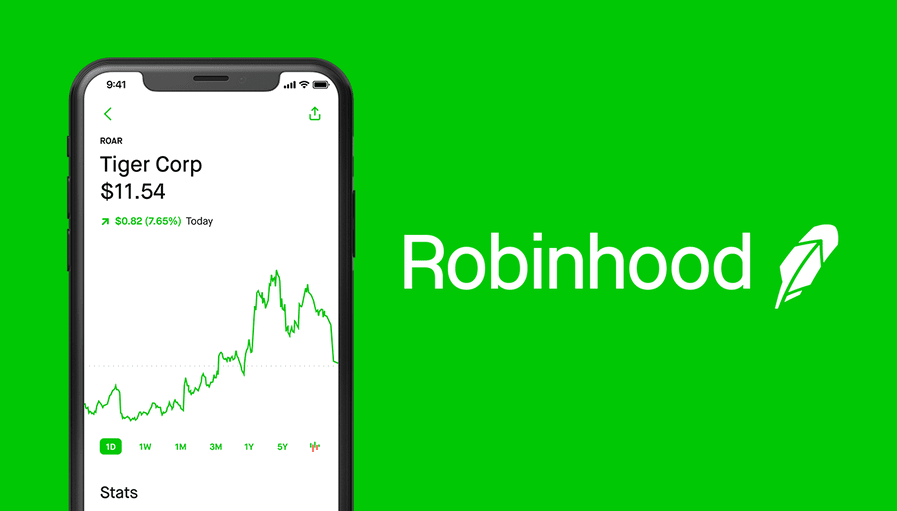
Image source: RobinHood
#3 Subscription-Based Programs
Subscription-based customer loyalty programs require customers to pay a recurring fee to access exclusive benefits, discounts, or services. These programs create a consistent revenue stream for businesses while offering subscribers value-added experiences that encourage long-term loyalty and engagement.
Best practices:
- Provide subscribers with exclusive benefits that justify the subscription fee, such as discounts, free shipping, or premium content.
- Create clear and straightforward pricing plans to make it easy for customers to understand their options.
- Tailor subscription offerings to individual preferences to enhance customer satisfaction and perceived value.
- Simplify the subscription process and provide convenient options for renewal to ensure a frictionless experience.
Best for:
A business should use a subscription-based loyalty program when it can offer consistent, exclusive value to customers, such as product access, premium services, or special discounts. This approach is well-suited for businesses with recurring products or services that aim to create stable, predictable revenue streams.
Pros:
- Generates stable, recurring income, improving cash flow and financial forecasting.
- Encourages long-term commitment, fostering loyalty and reducing churn.
- Facilitates targeted marketing efforts towards subscribers and non-subscribers.
Cons:
- Subscription fees may deter potential customers who are unwilling to commit.
- Ineffective for businesses with infrequent or one-time purchases, as customers may not perceive the value.
- Businesses must differentiate their offerings in a market crowded with subscription-based services.
Example: Amazon
Amazon offers a popular subscription-based customer loyalty program called "Amazon Prime." Subscribers pay an annual fee and receive various benefits, including free two-day shipping on eligible items, unlimited streaming of movies and TV shows, access to exclusive deals, and more.
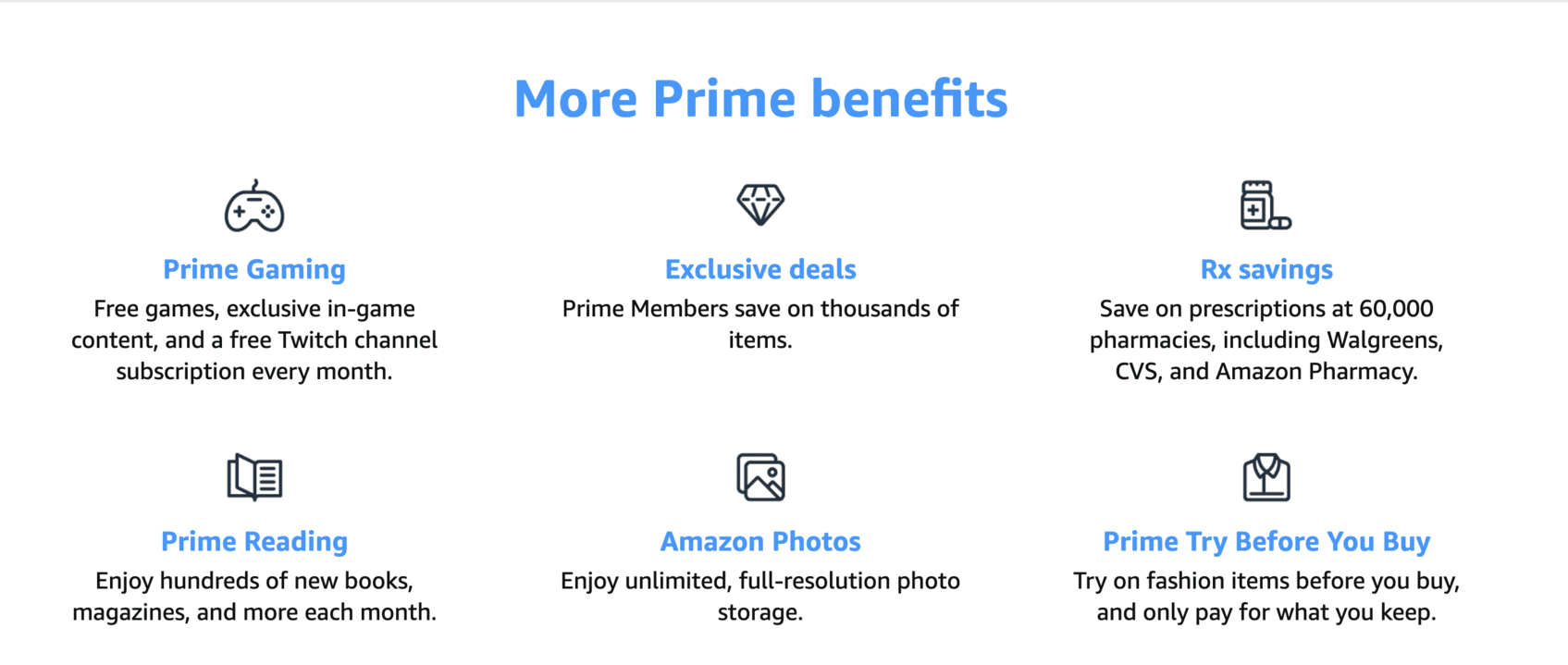
Image source: Amazon
#4 Cash-Back Programs
Cash-back customer loyalty programs reward customers with a percentage of their purchases as cash or store credit. This encourages repeat business and higher spending, as customers perceive direct financial benefits from shopping with the brand, strengthening their loyalty and engagement.
Best practices:
- Provide attractive cash-back percentages that outshine competitors and entice customers to choose your brand.
- Ensure a seamless and user-friendly process for customers to redeem their cash-back rewards.
- Regularly update customers on their cash-back balance and promote the program's benefits.
- Establish straightforward eligibility criteria and program rules to avoid confusion and frustration.
Best for:
A business should use a cash-back loyalty program when aiming to incentivize repeat purchases and higher spending with direct financial rewards. This approach works well for businesses with frequent purchase cycles, price-sensitive customers, or those seeking a simple, easy-to-understand loyalty program.
Pros:
- Customers appreciate direct financial benefits, which can increase the program's appeal.
- Easy-to-understand structure, making it attractive to a broader customer base.
- Cash-back rewards incentivize customers to spend more to maximize their returns.
Cons:
- Offering cash-back rewards can reduce overall profit margins.
- Many businesses offer cash-back programs, which makes it challenging to stand out.
- Customers may become more loyal to the cash-back rewards than the brand.
Example: Acorns
The investment app, Acorns, provides a rewards program called Acorns Earn to its customers. By shopping with select brands, users can earn cash back that gets automatically invested into their Acorns account. The program encourages users to increase their spending while motivating them to save and invest more through the platform, creating a mutually beneficial relationship between the user and the app.
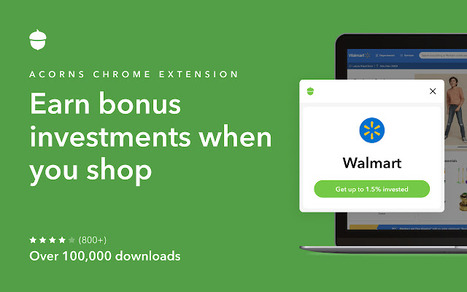
Image source: Acorns
#5 Punch Card Programs
Punch card customer loyalty programs offer customers a reward after a specific number of purchases or visits. Each purchase or visit earns a "punch" on a physical or digital card, and once the card is complete, the customer receives a free product, discount, or other incentive.
Best practices:
- Provide appealing incentives that encourage customers to complete their punch cards.
- Establish clear, easy-to-understand program rules to avoid confusion or frustration.
- Consider using digital punch cards to streamline tracking, reduce fraud, and enhance convenience.
- Clearly communicate the program's benefits to customers and train staff to promote it effectively.
Best for:
A business should use a punch card loyalty program when targeting increased customer frequency or specific product promotion. Of all the different types of customer loyalty programs, these programs are the most suitable for businesses with low-cost, repeat purchases, where customers can quickly accumulate punches.
Pros:
- Easy to understand and implement, appealing to a wide range of customers.
- Incentivizes customers to return and complete their punch cards.
- Requires minimal investment compared to more complex loyalty programs.
Cons:
- Provides less insight into customer preferences and behavior compared to digital loyalty programs.
- Physical punch cards can be subject to fraud or manipulation.
- Primarily encourages frequency rather than spending, potentially limiting overall revenue growth.
Example: Starbucks
Starbucks uses a punch card customer loyalty program called "Starbucks Rewards." Customers receive a physical or digital "Star" card and earn one Star for every transaction made at Starbucks stores. After earning enough Stars, customers can redeem them for free food and drinks, exclusive merchandise, and other benefits.

Image source: Starbucks
#6 Gamified Programs
Gamified customer loyalty programs incorporate game-like elements, such as challenges and competitions, to engage customers and encourage brand interaction. These programs may involve earning points, badges, or other virtual rewards for various brand interactions.
The aim of the programs is to create a fun, immersive experience that fosters loyalty, stimulates customer participation and generates excitement around the brand.
Best practices:
- Develop fun, interactive challenges or competitions that resonate with your target audience.
- Provide incentives that are valuable and relevant to your customers to drive motivation and engagement.
- Create a program that is easy to understand yet offers depth to keep customers engaged over time.
- Leverage social media to enhance the gaming experience and increase brand visibility.
Best for:
A business should use a gamified loyalty program when aiming to create a fun, engaging experience that fosters customer loyalty and brand interaction. This approach works well for businesses with a younger or tech-savvy target audience or those seeking to differentiate themselves from competitors with a unique program.
Pros:
- Interactive elements encourage customer participation and foster loyalty.
- Unique gaming experiences help a brand stand out from competitors.
- Gamified elements can prompt customers to share their experiences, boosting brand visibility.
Cons:
- Designing and maintaining an engaging gamified program can be resource-intensive.
- May not resonate with all customer demographics, particularly those who are less tech-savvy or uninterested in gaming.
- Gamified elements risk losing their appeal over time, requiring ongoing innovation to maintain customer interest.
Example: Grab
Grab, a Southeast Asian ride-hailing, and food delivery platform, uses a gamified customer loyalty program called "GrabRewards." Users earn points for every ride or food order made through the platform, which can be redeemed for various rewards such as free rides, meals, and other perks. The program also includes gamified elements, such as levels, badges, and challenges, to incentivize continued usage and foster a sense of community among its users.
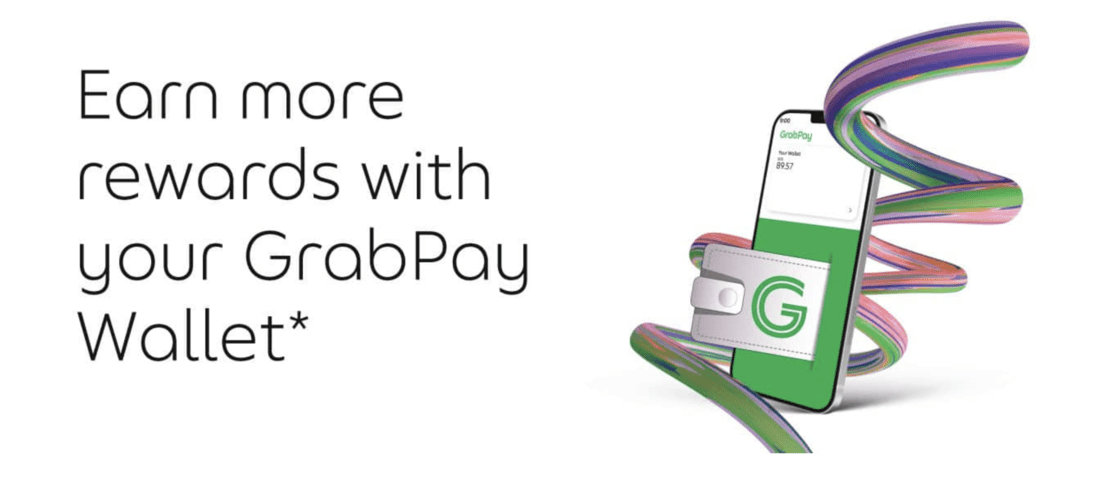
Image source: Grab
#7 Hybrid Programs
Hybrid customer loyalty programs combine elements from multiple loyalty program types, such as points-based, tiered, and gamified systems, to create a comprehensive and versatile rewards structure.
Best practices:
- Combine program elements thoughtfully to offer diverse rewards without overwhelming customers.
- Tailor rewards and engagement opportunities to individual customer preferences.
- Ensure customers understand the program's structure, benefits, and progress tracking.
- Use insights from various program components to optimize marketing strategies and personalize offers.
Best for:
A business should use a hybrid loyalty program when targeting diverse customer segments or seeking to maximize engagement by offering various reward types and experiences. This approach is well-suited for businesses that want to create a comprehensive and adaptable loyalty program that caters to a wide range of customer preferences.
Pros:
- Combines multiple loyalty elements to cater to diverse customer preferences and behaviors.
- Offers various rewards and experiences to maximize customer interaction and loyalty.
- Leverages insights from different program components to tailor marketing strategies and offers.
Cons:
- Requires careful planning and management to create a balanced, effective program.
- Explaining multiple program components may be difficult, potentially confusing your customers.
- Designing, implementing, and maintaining a hybrid program can be costly and time-consuming, especially for smaller businesses.
Example: CVS
CVS Health offers a gamified customer loyalty program called "CVS CarePass." Members pay a monthly or annual fee and receive various benefits, including free one-to-two-day shipping on eligible items, exclusive discounts, and $10 worth of ExtraBucks rewards each month. The program also includes gamified elements, such as personalized challenges, bonuses, and rewards, to encourage continued usage and deepen customer engagement with the brand.

Image source: CVS Health
#8 Value-Based Programs
Value-based customer loyalty programs reward customers for aligning with a brand's values, mission, or social causes. These programs encourage loyalty by fostering emotional connections and a sense of shared purpose, offering rewards or incentives linked to the brand's values or philanthropic initiatives.
Best practices:
- Clearly articulate your brand's mission, values, and social causes to establish a strong foundation for the program.
- Offer incentives that reflect your brand's values to ensure consistency and authenticity.
- Regularly share the positive impact generated by customers' participation in the program.
- Tell compelling stories that evoke empathy and create a sense of shared purpose.
- Work with like-minded organizations to enhance credibility and expand the program's reach and impact.
Best for:
A business should use a value-based loyalty program when its target audience shares the brand's values, mission, or social causes. Value-based loyalty programs are ideal for businesses aiming to build emotional connections with customers and foster long-term loyalty through shared purpose and meaningful engagement.
Pros:
- Fosters loyalty through shared values and purpose, creating deeper customer relationships.
- Sets the brand apart from competitors by focusing on values and impact.
- Enhances reputation by demonstrating a commitment to social or environmental causes.
Cons:
- May not resonate with customers who don't share the brand's values or mission.
- Requires genuine commitment to values; perceived insincerity can damage brand reputation.
- Assessing the program's success can be challenging, as non-financial benefits may be harder to quantify.
Example: Lemonade
Lemonade, an insurance company, uses a mission-based customer loyalty program called "Giveback." As part of the program, Lemonade donates a portion of its unused premiums to non-profit organizations chosen by its customers. The program aligns with Lemonade's mission to promote social good and encourage a more transparent and responsible insurance industry. By giving customers the power to choose the causes they care about, the program fosters a sense of community and shared purpose while also incentivizing continued usage of Lemonade's services.
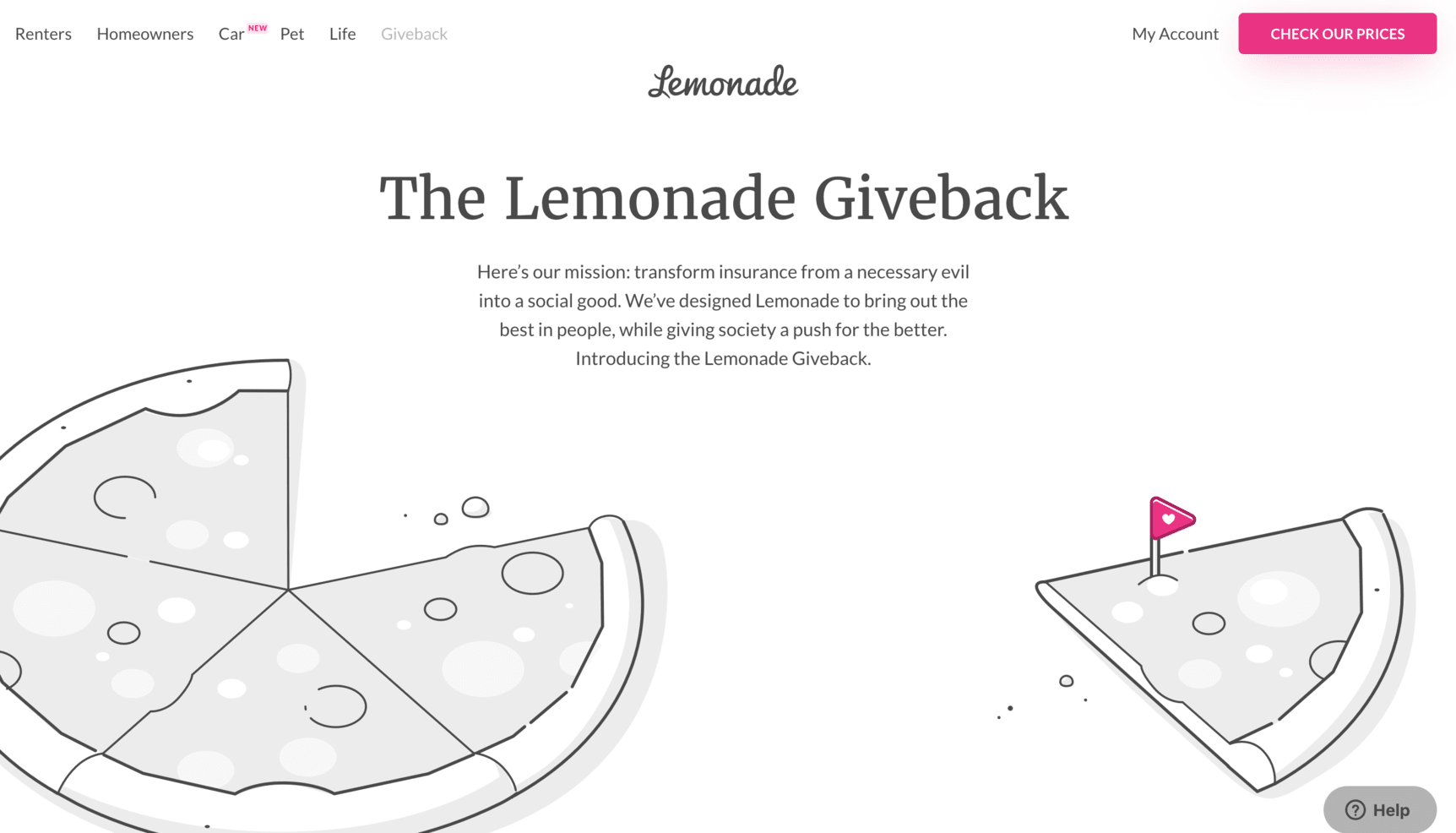
Image source: Lemonade
Conclusion
As we have seen in this post, there's a wide range of loyalty programs available, each with its own set of benefits and drawbacks.
Before making a decision, you should consider factors such as your target audience, objectives, and available resources. Make sure to select a program that aligns with your budget, brand identity, and customer preferences.
In addition to implementing best practices, don't forget to regularly evaluate the program's performance to foster long-lasting customer loyalty, drive repeat business, and stand out in an increasingly competitive market.
By carefully selecting and consistently evaluating your loyalty program, you can build a strong, lasting relationship with your customers and improve your bottom line.
Once you choose the best loyalty program that fits your brand's ambitions, consider investing in a loyalty program software to help you manage all aspects of the program. Loyalty program software comes pre-packed with a range of features that can automate your entire loyalty program and rewards process from end to end.







